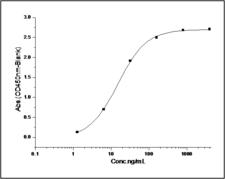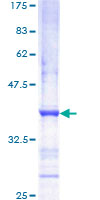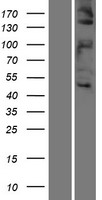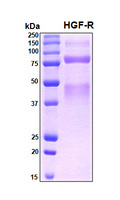order histories, retained contact details for faster checkout, review submissions, and special promotions.
Forgot password?
order histories, retained contact details for faster checkout, review submissions, and special promotions.
Location
Corporate Headquarters
Vector Laboratories, Inc.
6737 Mowry Ave
Newark, CA 94560
United States
Telephone Numbers
Customer Service: (800) 227-6666 / (650) 697-3600
Contact Us
Additional Contact Details
order histories, retained contact details for faster checkout, review submissions, and special promotions.
Forgot password?
order histories, retained contact details for faster checkout, review submissions, and special promotions.
c-Met
met proto-oncogene
Receptor tyrosine kinase that transduces signals from the extracellular matrix into the cytoplasm by binding to hepatocyte growth factor/HGF ligand. Regulates many physiological processes including proliferation, scattering, morphogenesis and survival. Ligand binding at the cell surface induces autophosphorylation of MET on its intracellular domain that provides docking sites for downstream signaling molecules. Following activation by ligand, interacts with the PI3-kinase subunit PIK3R1, PLCG1, SRC, GRB2, STAT3 or the adapter GAB1. Recruitment of these downstream effectors by MET leads to the activation of several signaling cascades including the RAS-ERK, PI3 kinase-AKT, or PLCgamma-PKC. The RAS-ERK activation is associated with the morphogenetic effects while PI3K/AKT coordinates prosurvival effects. During embryonic development, MET signaling plays a role in gastrulation, development and migration of muscles and neuronal precursors, angiogenesis and kidney formation. In adults, participates in wound healing as well as organ regeneration and tissue remodeling. Promotes also differentiation and proliferation of hematopoietic cells.Acts as a receptor for Listeria internalin inlB, mediating entry of the pathogen into cells.
| Gene Name: | met proto-oncogene |
| Family/Subfamily: | Protein Kinase , HGF Receptor/MET |
| Synonyms: | MET, AUTS9, C-Met, HGF/SF receptor, HGFR, Met kinase, Proto-oncogene c-Met, Scatter factor receptor, SF receptor, HGF receptor, RCCP2, Tyrosine-protein kinase Met |
| Target Sequences: | NM_000245 NP_000236.2 P08581 |
Publications (6)










If you do not find the reagent or information you require, please contact Customer.Support@LSBio.com to inquire about additional products in development.









